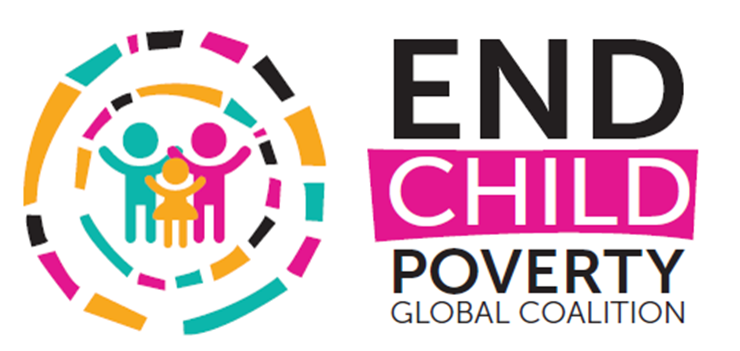
News
In alignment with this year’s IDEP theme, the Global Coalition to End Child Poverty is organizing an online event which will focus on addressing shame and stigma within social protection programming, with a special emphasis on children and families.
This webinar will present the latest figures on child poverty in high-income countries as well as effective policies that have helped to reduce it, showcasing a few example countries.
This webinar aims to explore the profiles of children who have been pushed into poverty due to a crisis, specifically examining the impacts of the Covid-19 pandemic as well as the climate crisis. To achieve this, research from different country contexts will be showcased, including Bangladesh, Georgia, and Uganda.
This webinar aims to explore the linkages between climate change and child poverty and discuss policy options to protect children living in poverty and their families against climate risks.
The aim of this event organized by the Global Coalition to End Child Poverty on IDEP 2023 is i) to launch a Call-To-Action that calls on Governments, businesses and the international community to expand social protection and care systems and promote decent work for adults to address child poverty and ii) to show advances but also remaining gaps in related social protection and care policies across the world.
We are only 7 years away from the end of the 2030 Agenda. The global landscape has changed drastically since the launch of the SDGs - we have witnessed unprecedented crises, the climate emergency, the COVID-19 pandemic, increased conflicts, heightened food prices, and inflation, affecting primarily the most vulnerable, including children. It is therefore more than time to take stock of the child poverty related SDG indicators of ending extreme child poverty and halving multidimensional child poverty.
The objective of the webinar is to present the latest global child poverty trends, covering both monetary child poverty and multidimensional child poverty.
This webinar is hosted by the Global Coalition to End Child Poverty will showcase various qualitative methods to measure child poverty and explore how they can complement quantitative measures for impactful policy advocacy.
The Global Coalition to End Child Poverty is launching a policy agenda to achieve the Sustainable Development Goals to end extreme child poverty and reduce multidimensional child poverty by half.
The Government of PDR and UNICEF are organizing an event to highlight the unprecedented increase in child poverty and inequality in the wake of the COVID-19 crisis, and outline the critical need to accelerate and reinforce global and national commitments for achieving the Sustainable Development Goals (SDGs) of ending extreme poverty and halving multidimensional child poverty.
Blogs
Today more than 300 million children live in extreme poverty, struggling to survive on less than $2.15 per day. Nearly one billion children experience multidimensional poverty – lacking access to essential services like healthcare, education, and proper nutrition. These stark numbers aren’t just statistics; they represent a fundamental challenge to global development and social justice.
Over half of the 1.1 billion people living in multidimensional poverty worldwide are children, according to the 2024 update of the global Multidimensional Poverty Index (MPI). The 2024 global MPI, published annually by the Oxford Poverty and Human Development Initiative (OPHI) and the Human Development Report Office of the United Nations Development Programme, was released on the International Day for the Eradication of Poverty. This year’s joint report reveals the extent of child poverty around the world using the MPI and explores the links between poverty and conflict.
Children and youth are denied not only their fundamental human rights, but also the possibility to live their life to their fullest, today and in the future. This global scenario is examined in the most recent edition of the WeWorld Index, a flagship product of ChildFund Alliance.
On Monday the 5th of December, members of the Global Coalition to End Child Poverty from around the world came together to reflect on our work in 2022 and develop our work plan for 2023 and beyond.
On Monday the 5th of December, members of the Global Coalition to End Child Poverty from around the world came together to reflect on our work in 2022 and develop our work plan for 2023 and beyond.
Netflix’s hit show "Maid" is the reality for hundreds of millions of children and their families worldwide.
It is well known that pandemics, natural disasters or other crisis events can pose a significant threat to our mental health. During COVID-19, the pandemic, the lockdown measures, and the new phenomenon known as infodemic have been causing psychological distress or mental health issues.
As a response to the COVID-19 pandemic, government policies around the world may have inadvertently affected the mental wellbeing of children.
The world of poverty measurement has been transformed over the past 20 or so years, with the idea of multidimensional poverty measurement, including for children, become mainstream and indeed included in the SDGs for all countries to monitor and address.





















To design effective child well-being policies, policy-makers need comprehensive and timely data that capture what is going on in children’s lives. OECD’s new report, Measuring What Matters for Child Well-being and Policies, aims to move the child data agenda forward by laying the groundwork for better statistical infrastructures that will ultimately inform policy development.